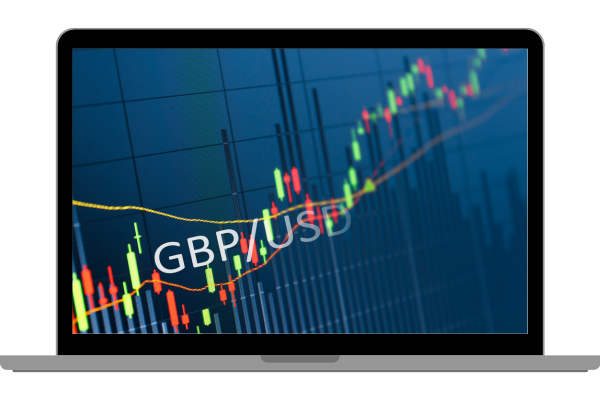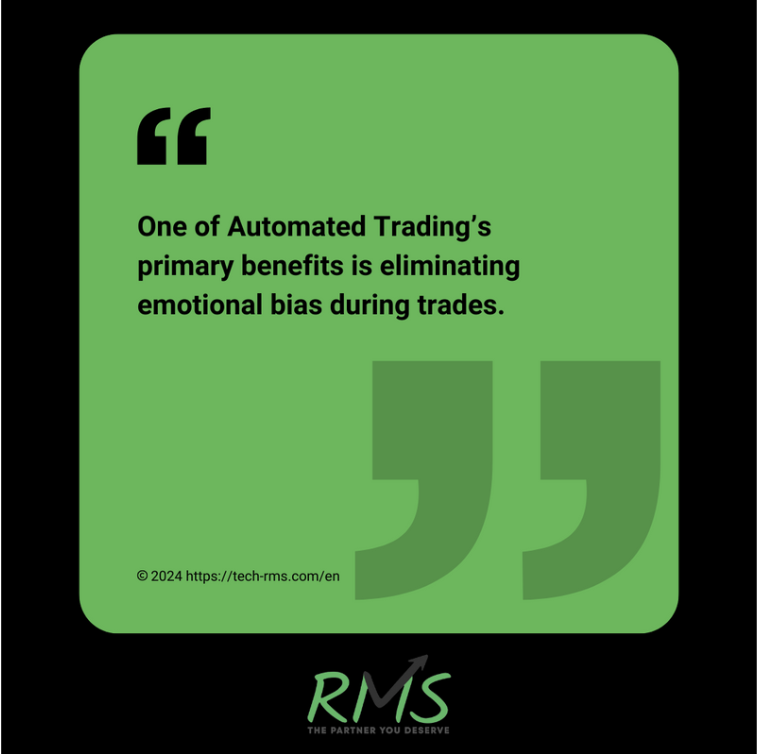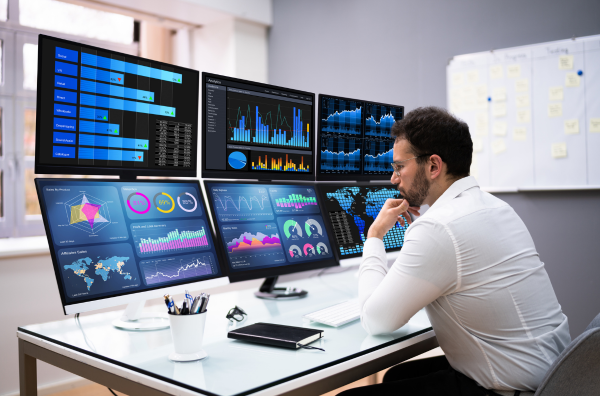
Automated trading is not a novel concept in trading. Using robots to automate trade execution was already a common practice as early as the late 1990s.
However, as a new trader, you may not be very familiar with the concept of automated trading. This can lead to many misconceptions and ill-advised practices that do more harm than good.
This article addresses this issue and will help you better understand automated trading and how it works.
What is Automated Trading?
Automated trading is sometimes also called algorithmic trading. It refers to relying on computer programs or algorithms to execute trades on your behalf.
These automated programs use complex algorithms and mathematical formulas to carry out trades based on specific trading strategies.
You may know automated trading programs by their more common name, trading robots. But these trading programs are not the futuristic image you would commonly associate with the term “robot.”
Instead, automated trading robots are just computer programs you can plug into your broker’s trading platform.
How does Automated Trading work?

Automated trading programs are designed to generate trading signals and execute trades based on these. Trade robots generate these signals by analyzing market movements, trends, and other technical indicators.
Besides creating trading signals, automated trading programs have other capabilities, such as:
Market Analysis
Trading robots can continuously monitor markets for hours on end and acquire more data than when a human does the same.
These programs don’t need to sleep or experience data fatigue. Because of this, you can use automated trading programs to monitor your positions even when you’re away.
Trading robots can also keep an eye on vast amounts of market data that would otherwise be overwhelming for human traders. You can even use an automated trading program to monitor multiple markets simultaneously.

Risk Management
You can integrate risk management measures into your trading robot. Many well-known trading platforms like Meta Trade 4 and Meta Trader 5 have API capabilities.
This means you can incorporate risk management protocols into your automated trading program, provided you have the technological know-how.
For instance, you can implement a position sizing algorithm that “tells” the program the specific quantity or amount you will trade for each of your positions.
You can also set input stop-loss orders into your trading robot’s code and have them trigger based on pre-determined criteria.
You can even set a maximum drawdown amount for your trades by placing a predefined threshold. Once the drawdown reaches or exceeds this limit, your automated trading program’s algorithm will pause trading or adjust your position sizes, depending on your orders.
Market Monitoring and Adjustment
You can capitalize on the market analysis capabilities of trading robots and program them to adjust strategies automatically depending on prevailing market trends and conditions.
For example, you can integrate volatility measures into your automated trading program’s algorithm, which tells it to adjust your position sizes based on market volatility.
You can also integrate algorithms to determine bullish or bearish market trends and modify your strategies accordingly.
Why Automated Trading Gained Popularity

There’s a reason why automated trading has stood the test of time and remained a common industry practice since the early days of forex trading.
Let’s explore these reasons.
1. Automated Trading Removes Emotional Bias
One of automated trading’s primary benefits is eliminating emotional bias during trades.
Any trader worth his salt knows that emotional trading is never a good practice. However, there may be times when your emotions can get the better of you and prevent you from making sound trading decisions.
Letting a computer program execute trades for you is a surefire way of circumventing this problem.

2. Superior Execution Speed
Automated trading lets you execute a much higher number of trades simultaneously.
As these programs execute trades using predefined criteria, they can enter positions almost instantly as soon as these criteria are met by the market.
In contrast with manual trading where you have to look at a number of indicators before placing orders, you can accomplish more when you trade with a robot.
Speed is crucial in trading, as market prices can change within seconds. Relying on an automated trading program can help you keep up with fluctuating market conditions or when using specific trading strategies like scalping and intraday trading.
3. Automated Trading Improves Risk Management
If used correctly, automated trading programs can help you improve your risk management strategies.
By setting up automatic stop-loss orders, drawdown limits, or take-profit orders, you can effectively reduce the potential risks associated with automated trading.
Automated trading lets you use multiple trading strategies at the same time. This simultaneously lessens the risk you’re exposing yourself to and creates a hedge against losing positions.
What Platforms Can You Use for Automated Trading?

Due to the popularity of automated trading, many platforms support this function.
Below are some of the most well-known trading platforms that allow the use of trading robots.
Meta Trader 4
Meta Trader 4, or MT4, is one of the most widely used trading platforms today. Released in 2005, MT4 is used by over 100,000 brokers worldwide and caters to more than a million traders daily.
MT4 allows the use of Expert Advisors (EAs), the programming scripts that instruct trading robots. This platform has a user-friendly interface and a large and active community of developers.
Meta Trader 5
The successor of MT4, Meta Trader 5 (MT5) offers users an extended set of features not found in its predecessor.
Like MT4, MT5 supports the use of Expert Advisors and can also be used to trade other asset classes besides forex, such as stocks and commodities.
NinjaTrader
NinjaTrader is another highly popular trading platform designed especially for trading forex, futures, and stocks.
The platform supports automated trading through its NinjaScript. You can also use external scripts through NinjaTrader’s Automated Trading Interface (ATI).
